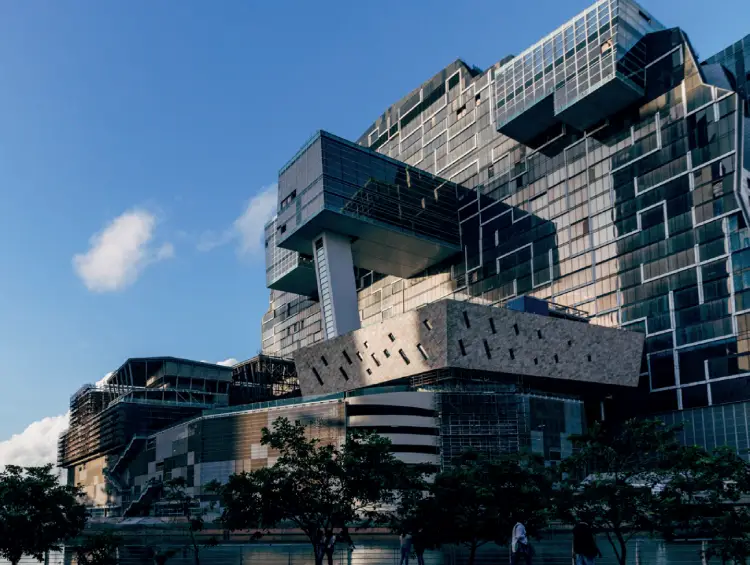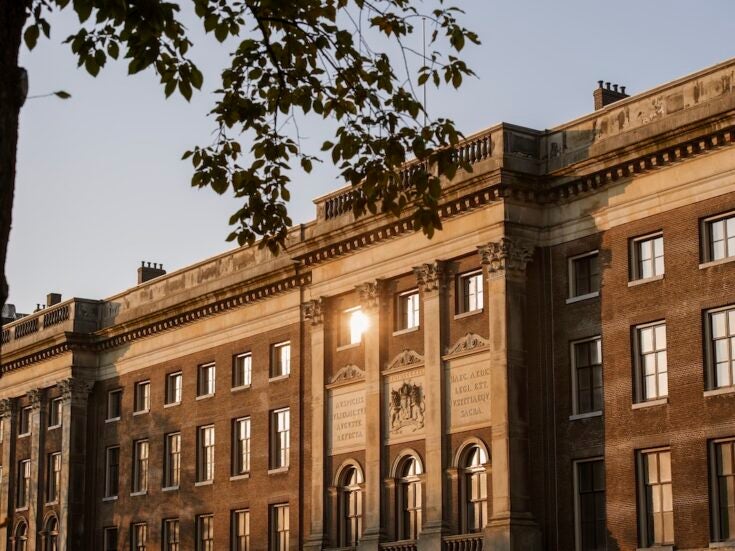
The architecture studio helmed by Cecil Balmond OBE and his son John began its ambitious projects in Sri Lanka before the latest waves of political and economic turbulence. But, John Balmond tells Rory Sachs, there is light at the end of the tunnel for the island nation
In early may Sri Lanka entered a two-week nationwide state of emergency, as the ruling United National Party attempted to contain protests over spiralling living costs and severe food and fuel shortages. Weeks of simmering chaos finally led to the resignation of prime minister Mahinda Rajapaksa, who requested that Ranil Wickremesinghe, who had already served as Sri Lanka’s prime minister five times, step forward to address the country’s economic crisis.
Wickremesinghe told parliament the nation faced the ‘most difficult months of our lives’ and sketched out an agenda that included assembling a ‘unity government’ to stabilise the country’s economy, navigate a foreign exchange crisis, negotiate much-needed economic support from the IMF and, most pressingly, protect the living standards of a population worried about the future.
At the time of writing, advice from the UK Foreign Office recommends visitors to Sri Lanka remain vigilant and avoid any protests. Several major airlines have recently paused or reduced services to the island.
The situation has deteriorated significantly since I visited in March, when there were peaceful protests over the depletion of foreign exchange reserves, power outages and the government’s handling of the economy. I travelled there – first to Colombo and then to the south coast – to see two projects of Balmond Studio, the design firm run by the Sri Lankan-British designer Cecil Balmond OBE and his son John. The company is overseeing the construction of what it describes as Colombo’s largest ever tourism project.
This is thanks to a $1 billion investment led by international property developer John Keells, which the firm says is the single largest private investment ever made in the country. At 4.5 million square feet, the project, called Cinnamon Life, will soon boast an 800-room hotel, offices and five storeys of shopping and entertainment space. Previously scheduled for completion in the final quarter of 2022, the project has already been transformational.
With a towering platinum disk that houses the hotel and retail space alongside several surrounding towers, the ‘city within a city’ has reshaped Colombo’s skyline. The project comes after a decade of surging tourism growth after the end of the civil war in 2009.
Balmond Studio is also behind the ongoing construction of a 106-apartment, ocean-view development in Weligama, a beautiful coastal town which was difficult to access before 2011. In that year, with the help of Japanese foreign direct investment, the Sri Lankan government constructed the Southern Expressway, a 125km road connecting Colombo and its Bandaranaike International Airport to the south. The new artery has cut the journey time from seven hours to two and a half.
The impact of this infrastructure on tourism in the south of Sri Lanka is hard to overstate: with its construction, and the arrival of five-star imports such as the Marriott nearby in recent years, holidaymakers have arrived en masse. CNN Travel ranked Sri Lanka as one of the best tourism destinations in the world for 2022, while more than 100,000 tourists visited the island in March, the first time monthly arrivals exceeded the milestone in the two years of the pandemic.
The Weligama development has been overseen by John Balmond, while Cecil took the creative lead for the Cinnamon Life project. Cecil’s 50-year career has earned him a towering reputation. He held the deputy chairmanship of Arup worldwide, where he oversaw all European operations. He also spearheaded the firm’s advanced geometry unit, creating a raft of striking buildings and monuments, including the ArcelorMittal Orbit sculpture at Stratford’s Olympic Village and several of London’s annual Serpentine Pavilions. Near the end of his tenure at the company, Arup led the construction of Beijing’s Bird’s Nest Stadium for the 2008 Olympics.
John says he hopes the work he and his father are doing now will provide a blueprint for developments that complement both the pristine natural landscape as well as the local economy. In Weligama, the sandy plot where the Balmonds are now concreting foundations sits metres away from a vibrant surf school. A stone’s throw away, there are fisherman using traditional stilts.
In 2014, John oversaw the construction of the Gal Oya Lodge, a forest-based holiday dwelling in the island’s Uva Province, which has been recognised by Sri Lanka’s Green Building Council for its ecologically friendly features. The Weligama project will include an innovative rainwater harvesting system.
Before working in architecture and design, John Balmond worked in the City of London, then moved back to Sri Lanka to join Cecil in creating the studio, which was launched in 2011. ‘I think he’s really proud,’ John says of his father, while adding that Cecil was pleased but somewhat surprised ‘that his son would… leave the UK and come to Sri Lanka, and do developments on the beach and in the jungle’.
The Balmond patriarch has never put pressure on his son to follow in his footsteps. ‘He’s always been very supportive and always said, “Don’t go into architecture, design, unless it’s your vocation,”’ says John. ‘It’s funny how I found myself creating.’ Their approach is not identical, however. ‘We all have very different styles,’ adds John. ‘Mine’s a slightly more commercial field; his is more geometric, mathematical. But the essence is the same, in terms of creating ideas, brands, buildings, art that didn’t exist before.’
Increasingly, John’s wife, Larimon, whose parents were influential business figures in Indian professional football and who followed her own career in international finance, has stepped forward as a strategic influence in the studio. John credits her ‘realist’ outlook with bringing his ‘blue-sky’ thinking to life.
Back in London, a few days before Rajapaksa’s resignation, I meet John and ask him what he thinks the situation means for the future of his projects and for Sri Lanka at large. He tells me that while the government must implement painful economic reforms, there is ‘light at the end of the tunnel’; Sri Lanka can build on the strength of its exports and the tremendous growth in tourism over the past decade. If that is to happen, the Balmond family may well find itself at the vanguard of the country’s recovery.
Image: Jonathan Wijayaratne / Bloomberg. At 4.5 million square feet, the project, called Cinnamon Life, will soon boast an 800-room hotel, offices and five storeys of shopping and entertainment space.






